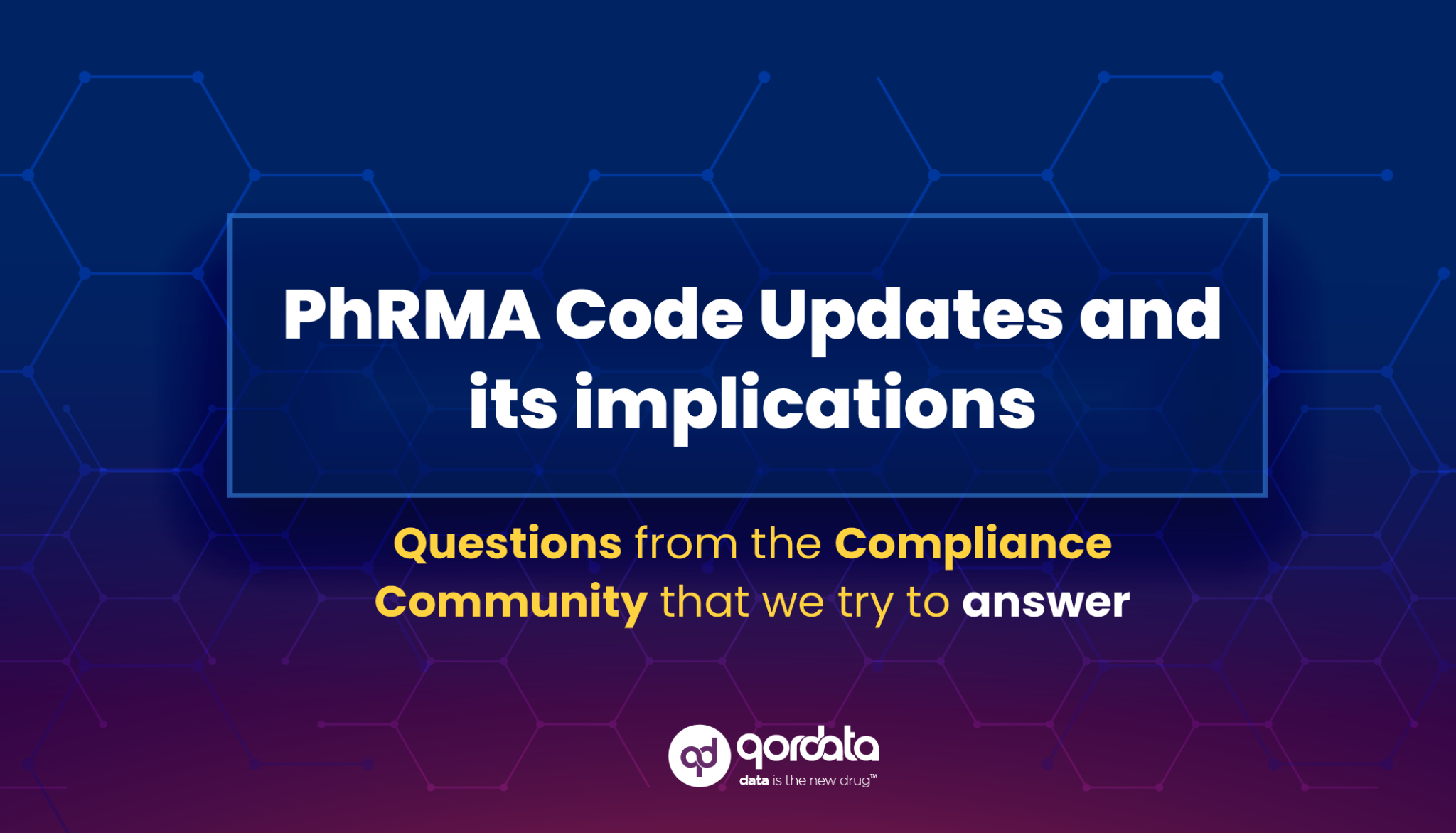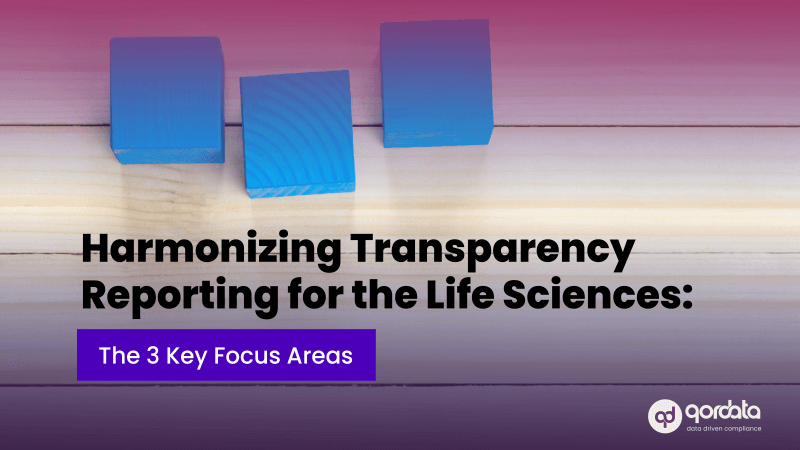Table of Contents
ToggleAccording to a study by the Office of the Inspector General (OIG), from 2016 to 2020, 13% of all Anti-Kickback Statute (AKS) enforcement actions involved kickbacks to HCPs.
This suggests that the problem of kickbacks is still prevalent in the life sciences industry.
What is AKS?
AKS is a federal law that prohibits the offering or receiving of anything of value to induce or reward referrals for items or services reimbursable by a federal healthcare program. This includes paying kickbacks to healthcare professionals (HCPs).
Trust is core to physician-patient relationships, and regulatory authorities such as the Centers for Medicare and Medicaid Services (CMS) place enormous trust in physicians to do the right thing.
These authorities believe that patient care, the cost of healthcare, and other relevant aspects suffer when the decisions of HCPs are based on financial incentives and not the patient’s best interests.
Even though life sciences companies strive to work ethically and ensure compliance with all applicable laws and regulations, there have been instances where the AKS has been violated in the past.
With the consequences of violating the AKS resulting in criminal and civil/administrative penalties, including Civil Monetary Penalties Law (CMPL) fines, how can companies ensure compliance with the law?
How can they monitor key risk areas such as speaker programs?
What role does digitized compliance monitoring play in enabling life sciences companies and compliance professionals to detect and prevent kickbacks to HCPs?
Data-driven compliance monitoring can augment the capabilities of a life sciences compliance program to detect and prevent kickbacks to HCPs.
Tracking financial transactions, monitoring business activities, and identifying suspicious patterns can help companies to identify potential kickback schemes early on before they cause any harm to the organization or patients.
Let’s discuss how digitized compliance monitoring works and how it can be used to detect and prevent kickbacks to HCPs.
Understanding the Applicability of the AKS
One of the best ways for life sciences companies to ensure compliance with the AKS is to understand the prohibitions of the statute, assess the totality of the risk involved, and make targeted updates to their compliance programs to specifically address the issues that are of interest to the regulatory authorities.
Let’s explore areas that are most likely to draw regulatory scrutiny so that life sciences companies can update their compliance programs to identify and remediate risks.
1. Speaker Programs
The HHS-OIG’s recent special fraud alert has raised the stakes and speaker programs have become the center of attention within the life sciences industry.
Other than enforcing a harsh stance on the lawfulness of speaker programs, the alert also showcased the growing scrutiny of life sciences companies engaging HCPs for participating in speaker programs.
Moreover, the HHS OIGs observed that many companies reduced in-person speaker programs during the pandemic.
Now as the pandemic subsides, a question emerges: should companies reassess the necessity of in-person programs, considering the inherent risks tied to offering or paying remuneration?
It’s imperative for companies to weigh these risks and explore alternative, less-risky means of conveying information to healthcare professionals. Compliance monitoring in this context is crucial to ensure adherence to these evolving regulations and guidelines.
2. Expanding Scope of Sunshine Act Reporting
Recent developments highlight a proactive shift in enforcement strategies, notably the Department of Justice’s (DOJ) interest in parallel settlements that address alleged Anti-Kickback Statute (AKS) violations and failures to report to the Centers for Medicare and Medicaid Services (CMS) under the U.S Sunshine Act.
Additionally, reporting under the Sunshine Act was made obligatory in 2013, the CMS had remained relatively inactive in terms of enforcement since then despite having the authority to impose civil monetary penalties.
However, in October 2020 when the DOJ and CMS announced a settlement with a device manufacturer over alleged violations of the AKS and the FCA – in the form of unreported purchases at a restaurant owned by a physician and a corresponding violation of Sunshine Act reporting.
This settlement represents a notable shift in Sunshine Act enforcement and showcases the untapped potential of CMS’s database as a powerful enforcement tool.
Moreover, the DOJ recently embraced data analytics to drive targeted investigations at life sciences companies.
This further clarifies the usage of CMS data for enforcement action therefore, understanding the broader threat of AKS, life sciences companies should conduct their own data analytics to identify outliers in their open payments data and remediate risks to stay compliant.
3. Off-Label Promotion
Life sciences companies must stay away from false or misleading product promotion, such as overstating the product’s effectiveness or efficacy.
Notably, cases of off-label promotion tied to kickbacks tend to attract the Department of Justice’s (DOJ) attention, emphasizing the critical need for stringent compliance and ethical promotional practices.
One way to reduce this risk is by organizing Promotional Review Committees (PRCs) and ensuring their alignment with the Federal Food, Drug, and Cosmetics Act. These committees play a critical role in reviewing and approving promotional materials.
Moreover, off-label promotion carries the risk of violating both the Federal Food, Drug, and Cosmetics Act (FDCA) and the Anti-Kickback Statute (AKS).
For instance, if a company promotes a product for unapproved uses and incentivizes healthcare providers to prescribe it for those unapproved uses, they could find themselves in violation of both the FDCA and the AKS.
To prevent sales representatives from veering off the approved messaging, implementing field-based monitoring and auditing is recommended.
Other Notable Areas Where AKS Applies
- Consulting agreements: Life sciences companies should monitor their consulting agreements to ensure that the services provided by HCPs are provided and are not simply a pretext for providing kickbacks.
- Gifts and hospitality: Life sciences companies should monitor their gifts and hospitality programs to ensure that the gifts and hospitality provided to HCPs are not excessive and are not provided with the intent of inducing or rewarding referrals.
- Research funding: Life sciences companies should monitor their research funding programs to ensure that the research is independent and that the results are published in peer-reviewed journals.
- Discounts and rebates: Life sciences companies should monitor their discounts and rebates programs to ensure that the discounts and rebates offered to HCPs are not intended to induce or reward referrals.
With the key risk areas out of the way, let’s explore how compliance professionals can leverage compliance monitoring to detect and prevent kickbacks to HCPs.
The Role of Compliance Monitoring in Detecting and Preventing Kickbacks
Compliance monitoring plays an essential role in detecting and preventing kickbacks. By monitoring their business activities, life sciences companies can identify potential kickback schemes early on before they cause any harm to the organization or patients.
Identifying unusual financial transactions, monitoring business activities for potential conflicts of interest, and identifying suspicious patterns – through automated and data-driven compliance monitoring, life sciences can quickly identify signs of a potential kickback scheme.
Large or frequent payments to HCPs or payments to HCPs who are not known to be using the company’s products or services can be considered anomalies that are a by-product of alleged kickbacks to HCPs.
Some other ways through which compliance monitoring helps compliance professionals to detect and prevent kickbacks are the following:
- Monitoring business activities, such as speaker programs and consulting agreements, for potential conflicts of interest.
- Identifying suspicious patterns, such as a sudden increase in referrals from a particular HCP.
- Ensure corrective and preventive measures are taken promptly to ensure remediation of risks.
By monitoring their activities, life sciences companies can identify potential kickback schemes and take steps to prevent them from occurring.
The Integration of Compliance Monitoring & Program
Assuming that relevant sources of data are present and are empowering the organization’s compliance program, the intersection of compliance monitoring solution and compliance program can prove to be highly effective in identifying potential violations of the anti-kickback statute.
By integrating compliance monitoring into their compliance programs, life sciences companies can proactively identify and prevent kickbacks by comprehensively monitoring the commercial side of their business, ensure that corrective measures are taken as soon as risks are identified and derive insights into key risk areas and make changes to their compliance program accordingly to demonstrate commitment to compliance.
Other ways through which compliance monitoring and program can collectively enable life sciences companies are:
- Developing and implementing policies and procedures that outline the company’s compliance requirements and expectations for employees.
- Training employees on the company’s compliance policies and procedures.
- Conducting regular audits and reviews of the company’s activities to identify potential compliance risks.
- Using data analytics to identify patterns and trends that could indicate potential compliance violations.
Case Studies and Examples Illustrating Compliance Monitoring Effectiveness
Here are some real-life case studies and practical examples that illustrate the effectiveness of compliance monitoring in identifying irregularities and ensuring adherence to the AKS:
Case Study #1
In 2019, a pharmaceutical company was fined $260 million for violating the AKS by paying kickbacks to HCPs in exchange for prescribing its drugs.
The company’s compliance monitoring system had identified a pattern of unusually high payments to HCPs who were prescribing the company’s drugs at a higher rate than their peers.
The company investigated the matter and discovered that the HCPs were being paid to promote the company’s drugs to their patients. The company took steps to terminate the contracts with the HCPs and reported the matter to the authorities.
Case Study #2
In 2020, a medical device company was fined $35 million for violating the AKS by paying kickbacks to HCPs in exchange for using its products.
The company’s compliance monitoring system had identified a pattern of unusually high payments to HCPs who were using the company’s products at a higher rate than their peers.
The company investigated the matter and discovered that the HCPs were being paid to use the company’s products in their practices. The company took steps to terminate the contracts with the HCPs and reported the matter to the authorities.
Practical Example
A life sciences company uses a compliance monitoring system to track all payments to HCPs. The compliance monitoring system flags any payments that are above a certain threshold (predefined limit) or that are made to HCPs who have a close relationship with the company.
The company’s compliance team then investigates these flagged payments to ensure that they are legitimate and do not violate the AKS. For example, the compliance team may review the HCP’s prescribing data to see if they are prescribing the company’s drugs at a higher rate than their peers. The company may also review HCP’s consulting agreements with the company to ensure that they are fair and reasonable.
By using compliance monitoring, life sciences companies can identify potential AKS violations early on and take steps to prevent them from occurring. This can help companies to avoid costly penalties and reputational damage.
Here are some additional tips for life sciences companies on how to use compliance monitoring to identify and prevent AKS violations:
- Focus your compliance monitoring efforts on the areas that are most likely to draw regulatory scrutiny, such as speaker programs, consulting agreements, and gifts and hospitality.
- Use data analytics to identify patterns and trends that could indicate potential AKS violations, such as unusually high payments to HCPs or HCPs who are prescribing the company’s products at a higher rate than their peers.
- Automate tasks, such as data collection and analysis, to free up compliance professionals to focus on more strategic activities.
- Use artificial intelligence (AI) to identify complex patterns and relationships that would be difficult to detect manually.
By following these tips, life sciences companies can use compliance monitoring to reduce the risk of violating the AKS and protect themselves from regulatory scrutiny and costly penalties.
Conclusion
The good news is, when it comes to compliance, you can do more with less. Start by analyzing your organization’s priorities from a risk-tolerance, industry, and regulatory perspective. Then focus on making all aspects of your compliance program — from training, testing, and monitoring to identifying, detecting, and reporting — fit for purpose in the most effective, resource-efficient manner possible.
That means not just knowing what to look for, but also knowing how to look. Instead of trying to boil the ocean of every transaction, focus on monitoring the program itself using a risk-based approach. Advanced analytics — which can help link unstructured or disparate information and consolidate decentralized processes — can dramatically improve your detection efforts by minimizing false positives, optimizing machine learning, and enabling advanced data visualization.



